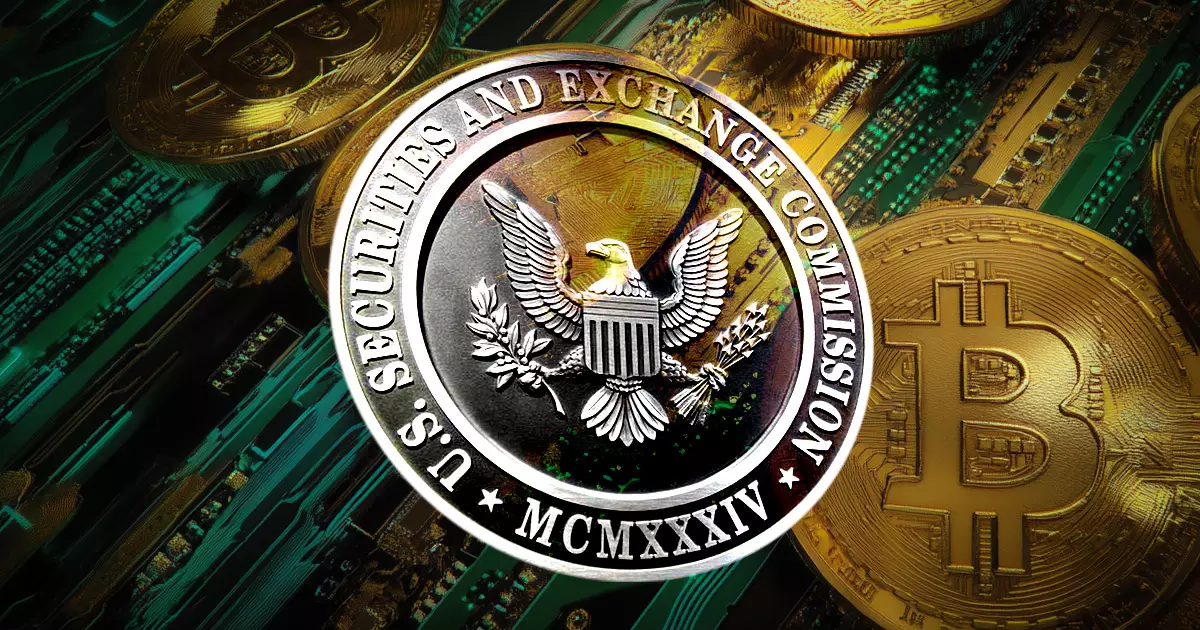The cryptocurrency landscape is at a crossroads, particularly in the realm of exchange-traded products (ETPs). The U.S. Securities and Exchange Commission’s (SEC) recent meetings with industry giants like BlackRock and advocacy groups such as the Crypto Council for Innovation (CCI) highlight a pressing dilemma: how to balance regulatory oversight with the demands of innovation. The SEC must navigate a complex environment where market participants are clamoring for clarity but are also running against the grain of existing regulatory frameworks. This situation isn’t merely a dance of compliance; it’s a pivotal moment in the evolution of crypto finance.
What strikes me as alarming is the SEC’s seemingly cautious approach. Frequent meetings with heavyweights signal that the Commission is aware of the growing institutional interest in crypto ETPs, yet the concrete outcomes remain nebulous. This dilatory attitude may stifle innovation and alienate major financial players who might otherwise contribute significantly to market maturation.
BlackRock’s Role: Bridging Traditional Finance with Crypto
BlackRock’s attendance at the SEC meetings exemplifies the union of traditional finance with the burgeoning crypto sector. As the world’s largest asset manager, their efforts to introduce in-kind redemptions in crypto ETPs signify not just interest but a clear path toward legitimacy for crypto assets. Given their extensive resources and market influence, BlackRock possesses the capabilities not only to comply with regulations but also to shape the regulatory landscape.
Nonetheless, one cannot help but wonder whether this interaction marks a genuine effort toward facilitating a smooth transition or merely serves as a public relations strategy. Are they genuinely committed to ensuring that their offerings are beneficial for investors, or are they primarily focused on creating profitable financial vehicles? The stakes here are not trivial; they reflect broader societal values about wealth distribution and market access.
The Implications of Proof of Stake Models
Concurrently, the discussions with the Proof of Stake Alliance address vital issues like staking models that cannot be ignored. The nuances of liquid, custodial, and delegated non-custodial staking offer unique benefits and risks. For instance, not incorporating staking mechanisms into ETPs could lead to underperformance, indirectly affecting investor trust in these products. The SEC’s hesitancy to adopt innovative models demonstrates a larger problem—the lack of urgency in adapting existing regulations to suit emerging financial paradigms.
Stakeholders need to understand that Ethereum and Solana’s proof-of-stake architectures are foundational to their ecosystems. Dismissing staking could disempower investors and limit opportunities for growth in crypto assets. If we fail to evolve, we risk suffocating countries’ financial implications as they dive headfirst into the digital currency revolution.
The Real Challenge: Regulating without Stifling
One of the crucial points that arose from the discussions was the framework for staking-as-a-service. The principles outlined aim to inform regulatory treatment and address validator operations and user participation. However, it feels like the SEC is oscillating between the need to create strict regulatory barriers versus the more libertarian stance of allowing the market to self-regulate itself. Striking this balance is the crux of the task at hand.
Moreover, while introducing new regulations may seem warranted, a one-size-fits-all approach can often lead to unintentional consequences. The SEC must understand the unique nature of crypto assets and the ecosystems they inhabit. Regulations must foster innovation while safeguarding investor interests—an often contradictory mandate that requires thoughtful discourse and deep expertise in the complexities of crypto finance.
Taking Stakeholders into Account
Looking ahead, the SEC’s engagement with entities like BlackRock and the CCI is a step in the right direction, but this dialogue must become more inclusive. Engaging a broader spectrum of market participants, from startups to hedge funds, can provide a fuller picture of the industry’s needs and potential. Regulation should not merely focus on risk mitigation but also on practical implementation that aligns with market development.
The most alarming reality here is that while crypto’s potential is undeniable, regulatory inertia threatens to dull its promise. The future of ETPs and other crypto financial products hangs in the balance, and the SEC must act decisively—before becoming the very roadblock that stifles the creativity and entrepreneurial spirit that defines the realm of cryptocurrencies.


Leave a Reply